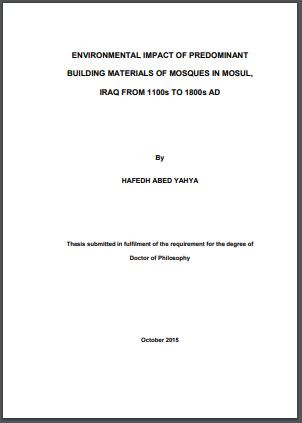
Environmental impact is the key factor in materials selection in sustainable architectural design. However, a few researches assess the environmental impact of building materials. Thus there is a necessity for more studies to suggest a systematic approach to assess the building materials in terms of environmental impact. This study applied Life cycle Impact Assessment to evaluate the environmental impacts of buildings materials. The study uses mixed qualitative and quantitative methods. This study’s descriptive survey represents raw data obtained from 12 mosques built within 1100s and 1800s. Quantitative analysis via GaBi Educational application was then used to analyse the data in order to assess the environmental impact of the building materials. From detailed descriptive survey four predominant materials were identified include: limestone, local marble, daub stone and clay brick. The historical mosques of Mosul used stones in almost all of their architectural elements, despite the use of clay brick in some architectural elements like domes and minarets. The study findings showed significant differences in the environmental impact of the four building materials that were used in various architectural elements. Clay brick had a higher environmental impact as compared to other building materials such as daub stone, whereas local marble had a higher impact as compared to the limestone. The properties of building materials had obvious effect on the architectural elements and the style of the mosques in Mosul. Finally, the study recommended reusing traditional building materials that are available in local region of Mosul and can reduce environmental risks by enhancing the production technology.
Yahya, H. A., ‘Environmental Impact of Predominant Building Materials of Mosques in Mosul, Iraq from 1100s to 1800s A.D.'(Unpublished doctoral thesis: Universiti Sains Malaysia, 2015).
I agree to the terms outlined below:
You agree to upload and assign Mosqpedia Database the rights to use the content worldwide and in perpetuity across all current and future media platforms. Mosqpedia Database may edit, copy, adapt and translate your contribution.
The content will be distributed under the Creative Commons Attribution-Deed – Attribution-NonCommercial-NoDerivatives 4.0 International – Creative Commons
All data will be stored in line with data protection regulations.